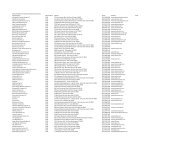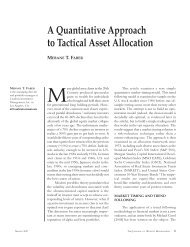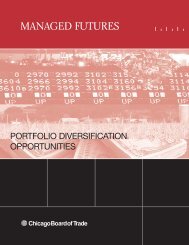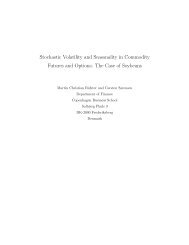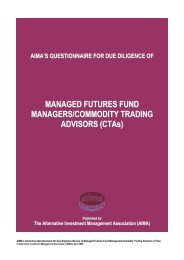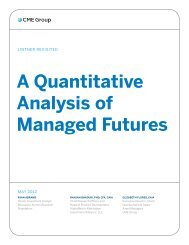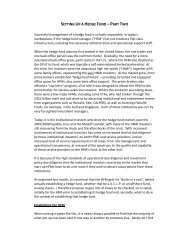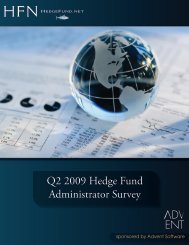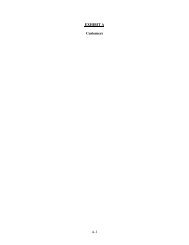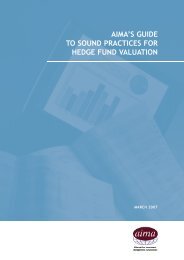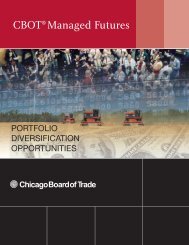Definitions & Concepts... [PDF] - Cycles Research Institute
Definitions & Concepts... [PDF] - Cycles Research Institute
Definitions & Concepts... [PDF] - Cycles Research Institute
You also want an ePaper? Increase the reach of your titles
YUMPU automatically turns print PDFs into web optimized ePapers that Google loves.
Pattern is the broadest of the words we use in cycle study. It is any arrangement that suggests or reveals<br />
design or order. It is the antithesis of unpattern - for example, the surface of a mirror, or sheets of polished<br />
steel, as they appear to the naked eye. Pattern is one of the eight or ten prime constituents of the universe. It<br />
is as fundamental as time, space, energy, matter, life, change, motion, emotion, thought, consciousness.<br />
(If you were God, sitting down to create the universe, as we know it, what other basic building blocks would<br />
you first need to create? What else is there in the universe?)<br />
Examples of pattern are infinite. They run from a straight line to an oriental rug, from a circle to an ocean<br />
liner. Pattern can be one, two or three dimensional. It can represent, either in one, two, or three dimension,<br />
the passage of time. Time is not a necessary condition of pattern. You can have pattern in space - for<br />
example, a colonade; or a maple leaf; or the capital of a Corinthian column. However, the only kind of<br />
pattern with which we are concerned in cycle study is pattern in time (or its two-dimensional representation<br />
on a chart).<br />
Unfortunately I can think of no single word to express the concept of pattern in time in contrast to the<br />
concept of pattern in space (design).<br />
Pattern in time can be cyclic or non-cyclic. Cyclic, as you know, means a complete course of operation<br />
returning to the original state. It is a series of changes regarded as leading back to its starting point. It<br />
involves sequence in contrast to separate (discrete) events. Many examples of cyclic pattern in time could<br />
be given. A business cycle, for instance, or a four-cycle engine, or a seasonal weather cycle (summer, fall,<br />
winter, spring, and summer again), or the life cycle of an insect (egg, larva, pupa, adult, and egg again). In<br />
all instances, what we have is a succession of events from a starting point through a variety of changes back,<br />
more or less, to the starting point.<br />
Non-cyclic patterns in time are time patterns that do not return to the place of beginning - populations<br />
growth is a good example, or the daily weight of a growing baby. Both of these sequences are definitely<br />
patterns in time, but because they do not return to the original state they are not cyclic. The popular word<br />
that most nearly describes cyclic patterns in time, as the phrase is being used here, is fluctuation.<br />
(This is not to say that the words “cycle” or “cyclic” do not have other perfectly valid meanings. Most<br />
words have other meanings. For example, my dictionary gives 23 different meanings for the word “order”!)<br />
Cyclic pattern in time can be repetitive or nonrepetitive - many cycles, or just one cycle. Business exhibits<br />
repetitive cyclic patterns in time. Starting, let us say, with a depression, business rises and falls and comes<br />
around to another depression, time after time. Also, one can speak of a single business cycle: the sequence<br />
from one depression to the next. The best popular word for repetitive cyclic pattern might be fluctuations<br />
(plural). A nonrepetitive cycle could perhaps best be called a wave, but the words cycle, fluctuation,<br />
oscillation, undulation are also used.<br />
Note that we have not yet introduced the idea of regularity of time. Two consecutive business depressions<br />
could be 3 years or 20 years apart. We are talking merely of repetition.<br />
At this point a new concept must be introduced-the concept of recurring events. Recurring events are similar<br />
to recurring cycles in that they are both recurring in time, both (at this point in our outline) may be any<br />
interval apart. The point of difference is that the recurring cycle is a sequence, a coming around again,<br />
whereas the recurrent events are discrete. Art forms that repeat again and again over the ages are good<br />
examples of recurrent events. So are certain religious symbols. So are volcanic eruptions or earthquakes. So<br />
are the deaths of presidents in office. (In any given year, or month, week, or day, the president dies or he<br />
doesn't.) All these examples are “yes” or “no” matters.<br />
Do not overlook the importance of recurrent events. First, they require different statistical treatment than do<br />
repetitive cycles. Second, sequences that we observe as repetitive cycles may sometimes be triggered by<br />
recurrent events.<br />
From now on these two concepts occupy parallel positions on our diagram.


![Definitions & Concepts... [PDF] - Cycles Research Institute](https://img.yumpu.com/26387731/4/500x640/definitions-amp-concepts-pdf-cycles-research-institute.jpg)
